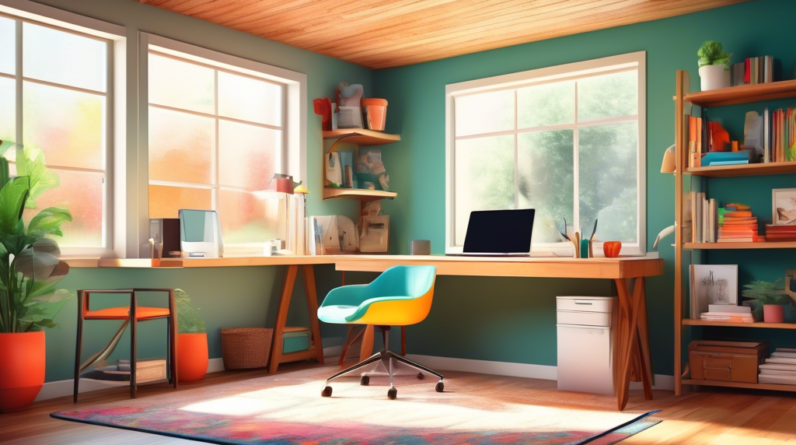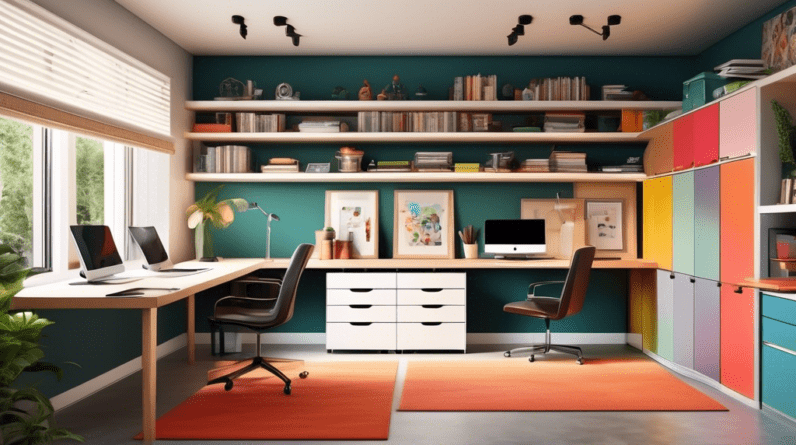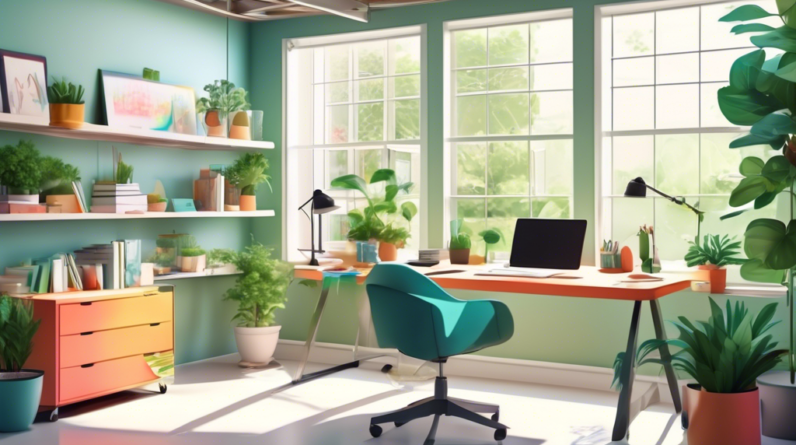
Transform Your Garage into a Productive Home Office
Why Convert Your Garage?
In today’s increasingly remote-work world, having a dedicated and inspiring workspace at home is more valuable than ever. If you’re short on space inside your home, your garage can be the perfect solution. Converting your garage into a home office offers a multitude of benefits:
Benefits of a Garage Conversion
-
Dedicated Workspace: Escape the distractions of home life and
enjoy a separate, designated area for work. -
Increased Home Value: A well-designed home office can
significantly boost your property’s market appeal. -
Cost-Effective: Compared to building an addition, a garage
conversion is often a more budget-friendly renovation project. -
Versatility: Customize the space to perfectly suit your
professional needs, whether you require a quiet study or a collaborative
work environment.
Planning Your Garage Conversion
1. Assess Your Needs and Garage’s Suitability
Before diving into the project, carefully consider your specific workspace
requirements:
-
Space Requirements: Determine how much square footage you
need to accommodate your work style, furniture, and equipment. -
Privacy Levels: Do you require a quiet space for focused
work, or will you be hosting clients or collaborating with colleagues? -
Storage Needs: Plan for adequate storage solutions to keep
your workspace organized and clutter-free.
Next, evaluate your garage’s suitability:
-
Structural Integrity: Ensure the garage foundation, walls,
and roof are in sound condition to support the conversion. -
Accessibility: Consider the ease of access to the garage
from your home and any necessary modifications. -
Local Building Codes: Research local regulations and obtain
necessary permits for electrical, plumbing, or structural changes.
2. Set a Realistic Budget
Garage conversions can range significantly in cost depending on factors like
size, finishes, and whether you hire contractors or opt for a DIY approach.
Establish a detailed budget early on, accounting for:
-
Professional Services: Architect, contractor, electrician,
plumber, HVAC technician. -
Materials: Insulation, drywall, flooring, paint, lighting,
electrical outlets, plumbing fixtures. -
Furniture and Decor: Desk, chair, shelving, storage
solutions, lighting fixtures, decorative elements. -
Contingency Fund: Allocate a buffer for unexpected
expenses that may arise during the renovation.
3. Design Your Dream Workspace
With a clear vision of your needs and budget, start sketching out your ideal
home office layout:
-
Layout and Flow: Optimize the use of space for efficient
work zones, movement, and natural light. -
Lighting Plan: Incorporate a mix of natural and artificial
lighting for optimal illumination and a comfortable ambiance. -
Electrical and Data Needs: Determine the placement of
outlets, switches, and data ports for your electronics and equipment. -
Climate Control: Consider insulation, heating, and cooling
options to ensure a comfortable working environment year-round. -
Style and Aesthetics: Choose colors, materials, and decor
that reflect your personal style and create an inspiring atmosphere.
Essential Garage Conversion Steps
1. Prepare the Garage
-
Clean and Declutter: Remove all belongings, tools, and
equipment from the garage. -
Inspect and Repair: Address any cracks, leaks, or damage to
the foundation, walls, roof, and windows. -
Insulation and Ventilation: Properly insulate walls, ceiling,
and garage door to regulate temperature and reduce noise. Install adequate
ventilation to prevent moisture buildup.
2. Framing and Drywall
-
Frame Walls and Ceiling: Build interior walls if needed and
frame the ceiling to create a finished look. -
Install Drywall: Cover the walls and ceiling with drywall,
tape, mud, and sand for a smooth surface.
3. Electrical and Plumbing
-
Electrical Upgrades: Hire a licensed electrician to install
sufficient outlets, switches, overhead lighting, and data ports. -
Plumbing Considerations: If adding a bathroom or kitchenette,
engage a licensed plumber to handle water supply and drainage.
4. Flooring, Paint, and Trim
-
Flooring Installation: Choose durable and comfortable
flooring options such as hardwood, laminate, or carpet tiles. -
Painting: Apply a fresh coat of paint to the walls and
ceiling in colors that complement your design scheme. -
Install Trim and Molding: Add baseboards, crown molding,
and door trim for a polished and finished appearance.
5. Finishing Touches and Decor
-
Lighting Fixtures: Install overhead lighting, task lighting,
and accent lighting to create a well-lit and inviting workspace. -
Window Treatments: Choose blinds, curtains, or shades that
provide privacy, light control, and style. -
Furniture and Accessories: Bring in your desk, chair,
shelving, storage solutions, and decorative elements to personalize your
home office.
Creating a Productive and Inspiring Workspace
1. Ergonomics and Comfort
-
Ergonomic Furniture: Invest in an adjustable chair and
desk that promote proper posture and reduce strain. -
Monitor Placement: Position your computer monitor at eye
level and an arm’s length away to minimize eye fatigue. -
Keyboard and Mouse: Use an ergonomic keyboard and mouse
to reduce stress on your wrists and hands.
2. Lighting and Ambiance
-
Natural Light: Maximize natural light by incorporating
windows, skylights, or light wells. -
Task Lighting: Use desk lamps or adjustable spotlights to
provide focused illumination for specific tasks. -
Ambient Lighting: Create a warm and inviting atmosphere
with overhead lighting, floor lamps, or wall sconces.
3. Organization and Storage
-
Storage Solutions: Utilize shelves, drawers, filing
cabinets, and vertical storage to keep your workspace tidy and organized. -
Cable Management: Conceal cords and cables with cable ties,
sleeves, or under-desk organizers to prevent clutter and tripping hazards. -
Regular Decluttering: Set aside time each week or month to
purge unnecessary items and maintain a clean and efficient workspace.
4. Personalization and Inspiration
-
Personal Touches: Add plants, artwork, photographs, or
inspirational quotes to personalize your space and boost creativity. -
Color Psychology: Use colors that inspire productivity and
focus, such as blues, greens, or yellows. -
Sound and Scents: Incorporate calming background music,
white noise, or essential oil diffusers to create a relaxing and focused
environment.
Conclusion
Transforming your garage into a home office is a rewarding investment that
can significantly enhance your work-life balance and productivity. By
carefully planning your design, selecting the right materials, and
incorporating elements that inspire creativity and focus, you can create a
workspace that fuels your success and brings joy to your workday.






